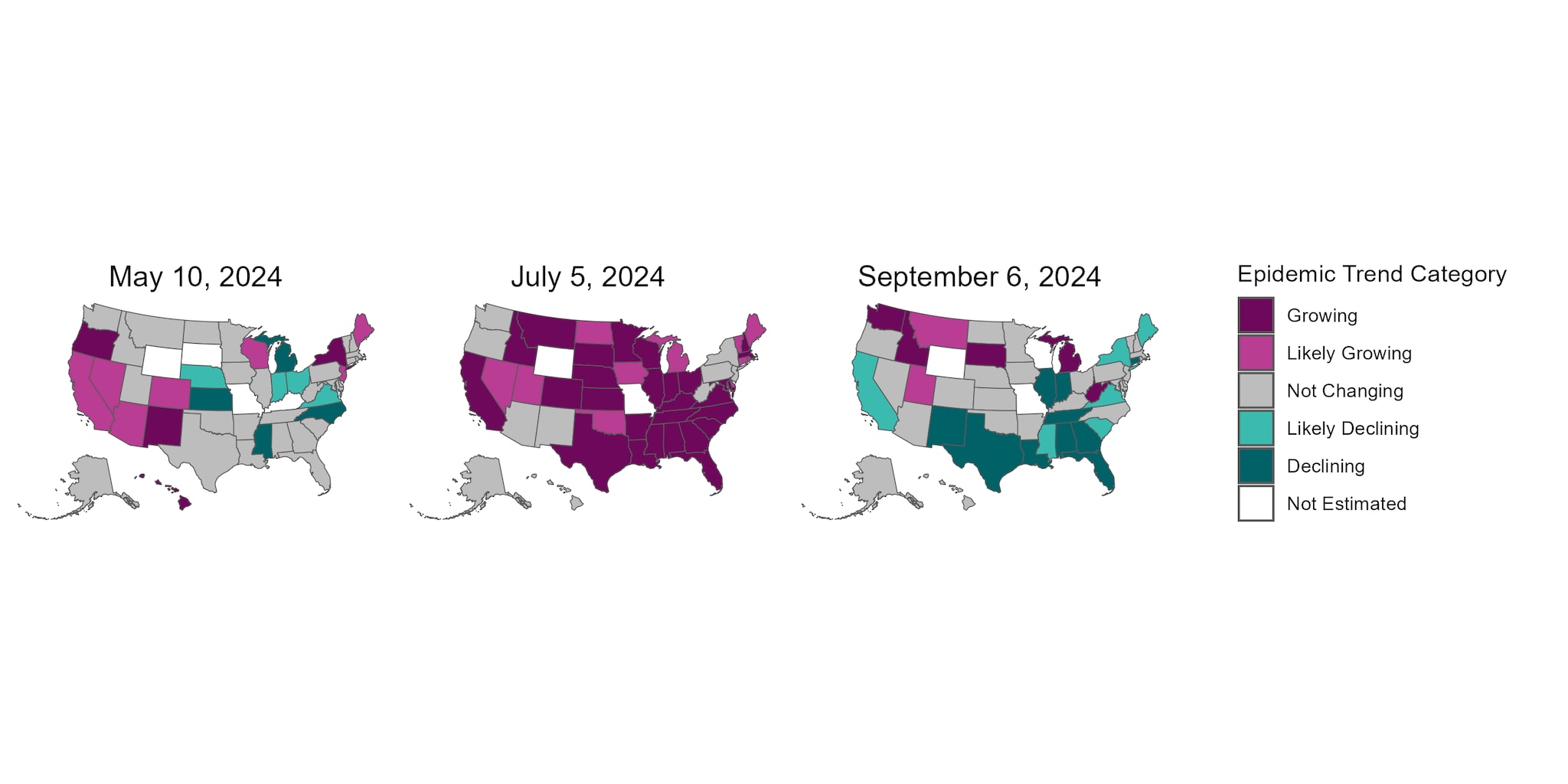At a glance
- CFA collaborated with CDC colleagues and the New Mexico Department of Health to measure the effectiveness of modeling methods in detecting COVID-19 surges before data reporting is complete.
- Epidemic trend estimates detected increases in COVID-19 spread across the United States before it appeared in surveillance data and confirmed that fewer emergency department visits for COVID-19 reflected actual decreases in COVID-19 community transmission.
- Epidemic trend estimates based on Rt can help public health officials recognize an increase in cases earlier and respond more quickly.
Partnering for Public Health
The Center for Forecasting and Outbreak Analytics (CFA) worked with colleagues from CDC and the New Mexico Department of Health to assess the performance of epidemic trend estimates based on Rt for COVID-19 during summer 2024 in the United States and New Mexico. CDC released these estimates weekly based on early data and then retrospectively compared them to final emergency department (ED) visit data. The analysis found that across the United States and in New Mexico, Rt estimates, when used with other metrics, were a reliable early indicator of increases in COVID-19 community transmission.
Importance of Early Insights for Preparedness
Access to timely data is a critical factor in public health preparedness. However, traditional data sources can be delayed. To help account for these data delays, tools such as the time-varying reproductive number, or Rt—which uses nowcasted emergency department visit data to produce epidemic trend categories—can be utilized. Epidemic trend categories help tell us whether infections are increasing, decreasing, or not changing. Additional information about Rt and epidemic trends can be found in CDC's Behind the Model page.
In this Morbidity and Mortality Weekly Report (MMWR)—led by CFA and co-authored with the National Center for Immunization and Respiratory Diseases, the National Syndromic Surveillance Program, and the New Mexico Department of Health—CDC analyzed the performance of weekly national and state-level Rt estimates and epidemic trend categories for COVID-19. During the summer of 2024, epidemic trend categories were an early indicator of increases in COVID-19 community transmission in May in the United States and New Mexico. Later in September, epidemic trend categories helped differentiate true decreases in COVID-19 transmission from apparent decreases resulting from incomplete reporting.
Epidemic trend categories and Rt estimates, when combined with other surveillance data, can offer valuable insights for public health readiness. State-level trends provide local situational awareness and can assist nearby states in tracking regional disease patterns.

Future Work
In addition to ongoing national evaluations of epidemic trend categories based on Rt, CFA also continues to collaborate with health departments to implement models locally. For example, we are continuing to work with the New Mexico Department of Health to explore Rt estimates and epidemic trend categories at the sub-state level. Other health departments interested in applying this work should contact CFA.
